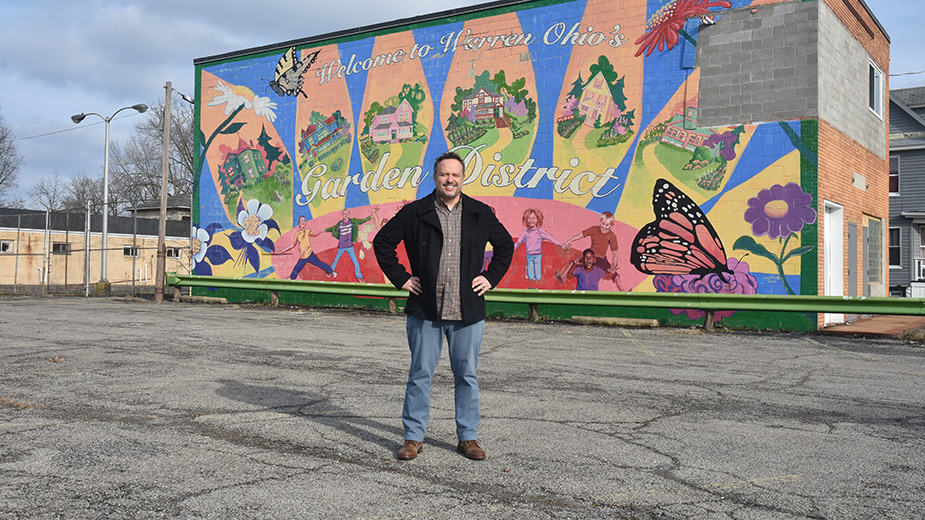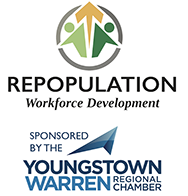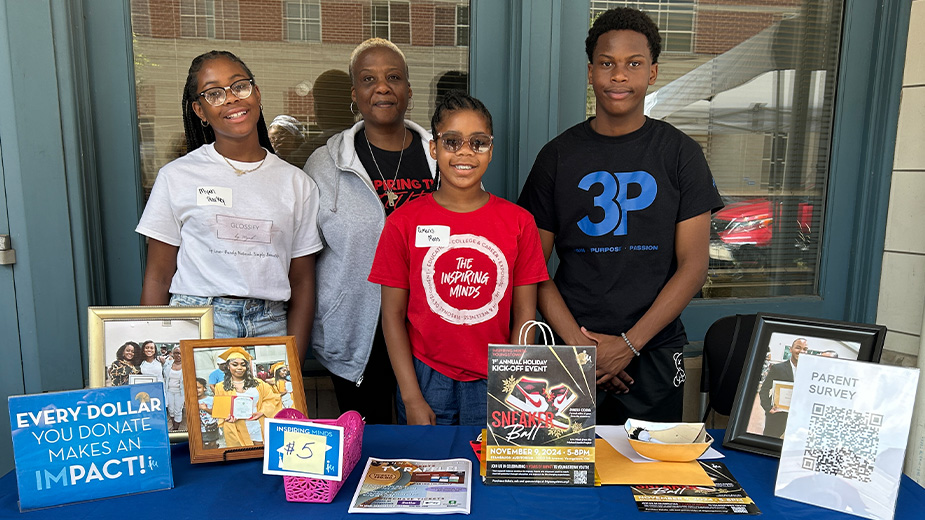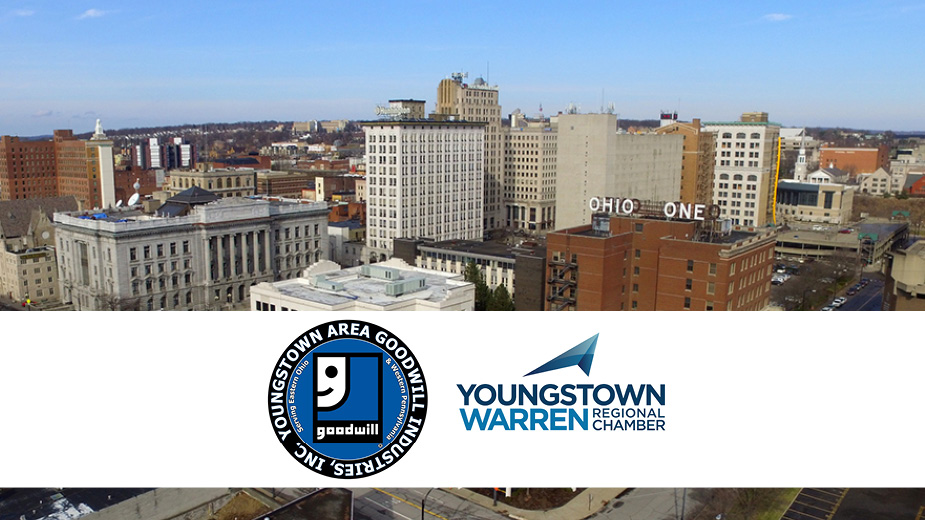Taking on the Housing Crisis, One Dwelling at a Time
YOUNGSTOWN, Ohio – The executive director of Trumbull Neighborhood Partnership, Matt Martin, navigates around a large industrial dumpster in the driveway of 3824 Greenmont Ave. in Warren.
The single-story house, vacant for nearly a decade, sits in a well-groomed, agreeable neighborhood in the southeastern quadrant of the city.
“This was a situation where it was probably going to end up getting demolished if we didn’t act,” Martin says of the structure.
Instead, the organization acquired the property last summer from the owner for $30,000 and will have invested another $100,000 in renovations when the project is complete. Once the house is ready, it will be placed on the market at an as-yet undetermined price. “Our main priority is to get an owner-occupant,” Martin says.
The TNP project represents the rescue of a single house in a single neighborhood. Yet this rehab represents a step toward addressing a growing problem across the Mahoning Valley – the lack of sustainable, quality housing that ultimately could affect economic and population growth.
It’s a looming crisis that business and development leaders have not ignored. Indeed, the Youngstown/Warren Regional Chamber has made repopulation its No. 1 priority, according to its president and CEO, Guy Coviello.
“We took up growing population as our first priority,” Coviello recently said at a press event. “But as we started to go down that path, we quickly realized we don’t have enough houses for people. Growing the housing stock is right behind growing the population as top priorities in this community.”
Remaking Neighborhoods
In early January, contractors from American Pinnacle Construction, Youngstown, were busy laying new floor tiles at the Greenmont Avenue house. Should all go as planned, the property could come on the market by March.
“This was vacant for years,” Martin says. “There were all kinds of wild animals and all kinds of stuff, raccoons.”
In this case, TNP salvaged a house in a well-kept neighborhood that was in danger of being demolished.
“It’s a high-quality renovation,” Martin says, noting the project accomplishes two critical goals. First, it helps to stabilize an already solid neighborhood. Second, it adds to a thin housing inventory.
Trumbull Neighborhood Partnership was formed as a nonprofit in 2010 in the aftermath of a financial and foreclosure crisis that hollowed out neighborhoods and communities across the Mahoning Valley. In 2013, the organization assumed management of the Trumbull County Land Bank, which empowered it to apply for state, federal and other financial resources to tackle the problem of blight and property vacancies.
Since then, TNP has raised millions of dollars that it has devoted to either razing dilapidated structures or initiating restorations on houses that could be saved, Martin says. In 2015, the organization received a $17 million grant earmarked for demolition of structures across the county. That grant expired last year.
“We’ve done about 1,300 demolitions in Trumbull County and about half that many renovations in the decade-plus that we’ve been here,” Martin says.
In 2014, for example, a TNP survey identified 1,532 vacant houses in the city of Warren. According to a housing inventory update released in January, that number now stands at 432.
However, the housing market has changed significantly – especially over the last three years, Martin says.
“When we started doing this, many of the vacant homes had no value,” he says, which is no longer the case. “Properties have value again.”
While demolishing unsafe houses is critical to stabilizing neighborhoods, it also presents an opportunity to redevelop these vacant parcels into landscaped areas, or perhaps new construction.
In 2024, Martin says TNP plans to build a “handful” – his description – of new houses while encouraging additional private investment in the neighborhoods.“In some cases, it’s more cost-effective to build,” he says.
New Residential Efforts in Youngstown
The anemic housing inventory has squeezed not just potential homebuyers, but renters as well, observes Ian Beniston, executive director of Youngstown Neighborhood Development Corp., a nonprofit community development organization based in Youngstown.
“Housing in general is a major issue in the Mahoning Valley,” Beniston says.
YNDC’s first objective is to ensure that existing homeowners who are lower-income can preserve their homes, Beniston says.
“That’s the first piece we focus on. Just this past year, we’ve helped more than 400 such homeowners,” he continues, mostly in Youngstown but also across Mahoning County. Programs administered by YNDC include roof replacements, façade improvements or other upgrades needed to stabilize the housing market.
“The next component is to develop sufficient, quality housing for sale and rent,” Beniston says. “There are thousands of people in Youngstown living in slum-quality housing.”
Rental units, for example – where landlords do the bare minimum of maintenance and yet charge higher leasing rates – is a recurring problem, he adds. The lack of available rentals has driven prices upward. In many cases, rates don’t reflect the quality of the housing, he says.
“I’ve seen folks paying a decent amount of rent for what at best is marginal-quality housing units,” he says. “Rents are not commensurate with the value of the home.”
YNDC has helped to renovate more than 200 houses and place them for sale or rent, the bulk of which were finished over the last eight years, Beniston says. Currently, the organization is renovating a fourplex on the city’s south side, while work continues on the former Foster Theater on Glenwood Avenue to convert the building into four rental units and a commercial property.
YNDC also has succeeded in building a selection of new houses, three of which are in the Handel’s district on Helena and two in the Mineral Springs neighborhood on the South Side.
And YNDC has plans to construct three new houses at Glenwood Avenue and High Street this year, Beniston says.
“In 2024, we’ll create dozens of new units,” he says. “It doesn’t sound like a lot but when we stack about 30 year-over-year, you’re getting toward a couple hundred more over five years.”
Still, YNDC’s efforts along with other development partners are “just starting to scratch the surface for regional demand,” Beniston says. The organization works closely with the Mahoning County Land Bank to help assemble vacant property and return it to productive use.
“We work with the land bank to assemble land and attract other developers,” Beniston explains.
Deb Flora, executive director of the Mahoning County Land Bank, says positive trends across the Mahoning Valley that reflect emerging employment opportunities are likely to underscore the need for adequate, quality housing.
New state programs such as the Welcome Home initiative could help boost the area’s housing stock, she says. Under the program, land banks and land reuse companies can apply for as much as $30,000 in grant money toward the purchase or rehabilitation of a qualifying property.
But the program as written comes with several qualifications that might impede its availability, Flora says. For example, a would-be homebuyer would need to earn 80% or less of the area’s average median income to be eligible. Flora and other advocates would like to see this raised.
“We need a little more help with the AMI requirement so we can meet the needs of more in the community,” she says.
Nevertheless, the program presents opportunities for organizations such as the Land Bank and YNDC to work together on future projects, Flora says. “There are two options we could work on simultaneously: rehab and new construction,” she says.
Housing proponents are exploring other funding streams that development partners could use to offset the costs of new construction, Flora says.
“The needs of first-time homebuyers are expanding,” she says. “There hasn’t been a great supply. That’s the issue we want to address, with our eye on quality.”
Youngstown Mayor Jamael Tito Brown says the city is especially cognizant of its housing challenges, noting much of the inventory is dated, with many houses built before 1950.
“We have an aging housing stock,” he says. The city, however, has incentive programs that can help homeowners make needed repairs or reduce the tax burden on major investments or improvements in the house.
“We have a façade grant and the Community Reinvestment Act program, where you can expand or enlarge your house and get a tax break,” Brown says.
Nikki Posterli, the mayor’s chief of staff and director of the city’s department of planning and economic development, says the city has committed $10 million in American Rescue Plan funds for incentives, plus another $8 million in ARP money directed for new development and substantial rehab work. The city is in the process of shoring up matching funds for the programs, she says. Another $5 million for roofing programs and land assembly efforts is also available.
“There is high demand at the moment,” Posterli says. “In total, there is $23 million in ARP funds directed toward housing,” she says.
As in Warren, the number of vacant houses across Youngstown has fallen significantly since 2008, when the city first conducted a comprehensive housing survey. That year, there were more than 5,000 abandoned properties.
By the end of 2023, there were just 740 vacant and tax-delinquent properties.“ Most of these will need to be demolished if they don’t receive major rehabilitation,” Beniston says.
Beniston says YNDC owns more than 60 residential rental units, all of which are filled. “We got hundreds of calls on these units – more than we want to get,” he says. “Which is symptomatic of these challenges.”
The housing shortage isn’t limited to the Mahoning Valley, Beniston says. “I don’t think we’re unique from any other community across the country.”
What has changed in the Mahoning Valley is the drastic shift in strategy from 15 years ago, when the major objective was blight removal and demolition, Beniston says.
“For so long, all we talked about was demolition and excess housing,” he reflects. “Now, we need more housing.”
Ultimately, the goal is to present a collective effort to attract private residential development to the Mahoning Valley, a task that can only be accomplished through strong, sustained partnerships, Beniston says.
“It’s bigger than us,” he says. “We need multiple partners, we need to have a whole regional response to get developers in. We need to fix what’s here, but we need new product.”
Pictured at top: Matt Martin, executive director of Trumbull Neighborhood Partnership, stands before a mural celebrating the revival of Warren’s Garden District, a 22-block area.
Copyright 2024 The Business Journal, Youngstown, Ohio.




